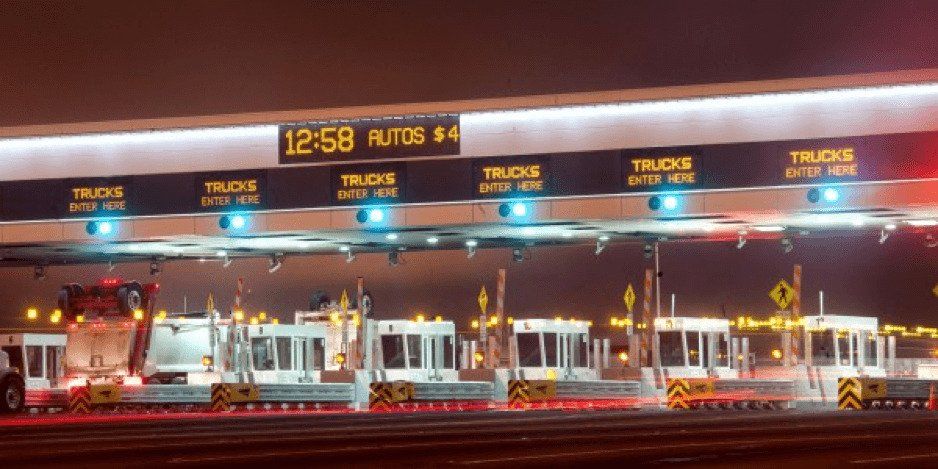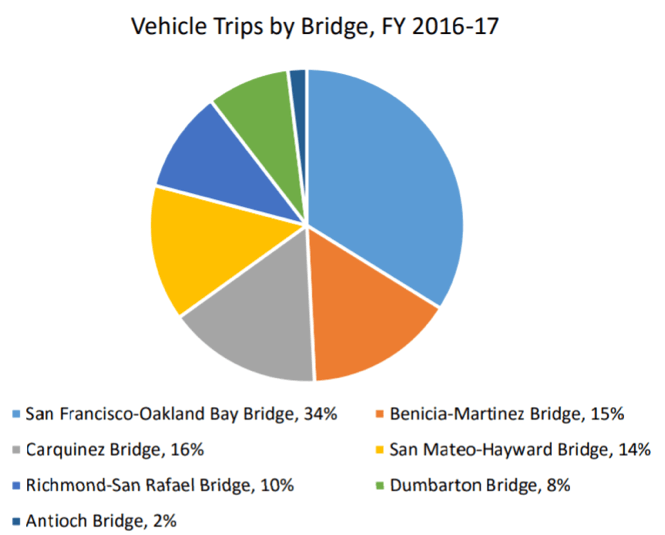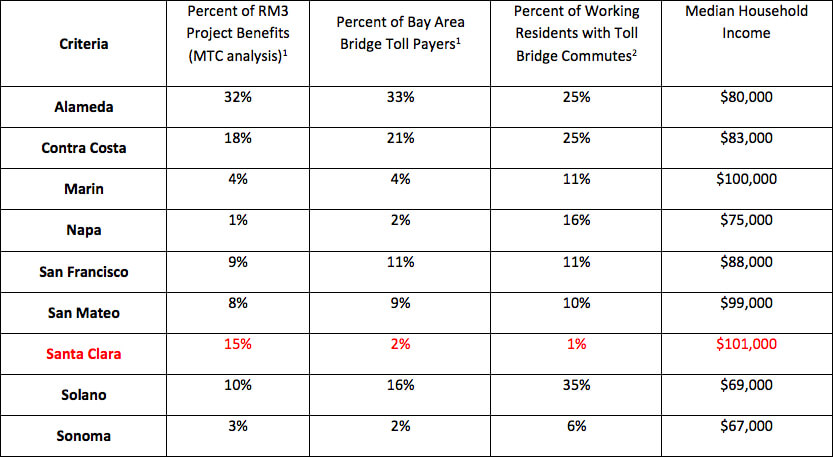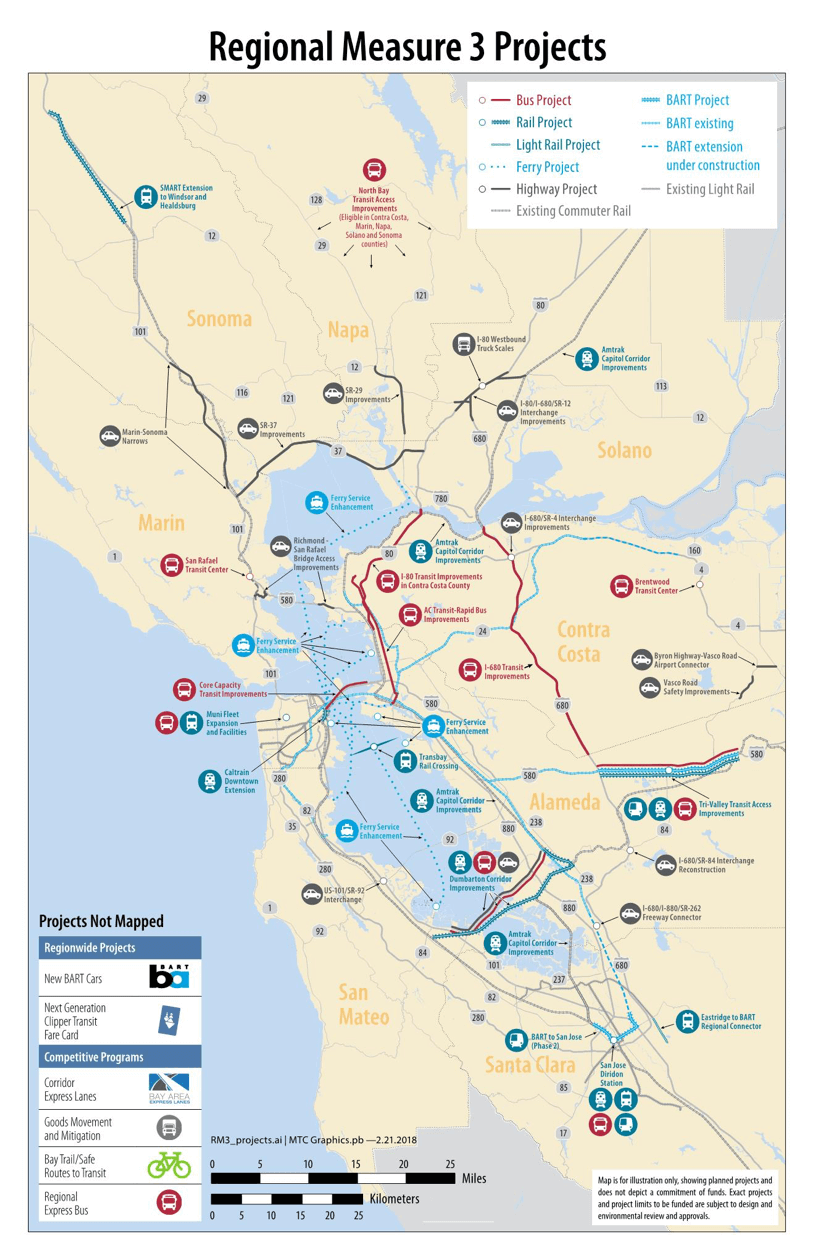
Source: Baybridgeinfo.org
Just about everyone agrees that the Bay Area’s congested transportation system is in dire need of reinvestment. With gas tax revenues falling and construction costs escalating, traditional funding sources are insufficient to address the scale of the region’s infrastructure backlog. To address these challenges, MTC has proposed Regional Measure 3 (RM3), a nine-county ballot measure aimed at raising an additional $4.5 billion in funding by increasing bridge tolls.
Unfortunately, a review of the RM3 expenditure plan reveals a flawed and inequitable measure. Although RM3 would fund a number of worthy projects, its expenditure plan fails to fulfill its stated goals of funding “highway and transit improvements in the toll bridge corridors and their approach routes.” Instead, RM3 redirects half of toll revenues toward unrelated projects that would not benefit toll payers, especially projects in Santa Clara County.

RM3 would raise tolls on the Bay Area’s seven bridges controlled by the Bay Area Toll Authority. The Golden Gate Bridge would not be included. Source: MTC
Based on our own review of RM3 project benefits, only about half of RM3 revenues would fund projects that benefit toll bridge corridors and approach routes. Rather than funding projects that could shift toll bridge commuters to transit and carpooling, the expenditure plan includes funding for numerous projects that do not serve toll bridge corridors, such as BART to San Jose, VTA’s Eastridge Light Rail extension, the US-101 Marin-Sonoma Narrows freeway widening, and a ferry from Redwood City to San Francisco.
Furthermore, according to MTC’s own analysis (summarized below), RM3’s benefits would be distributed inequitably between counties without any connection to the proportion of tolls paid. Santa Clara County would receive $45 in project funding for every $6 bridge toll paid by residents – County residents pay just two percent of tolls but would receive 15 percent of RM3’s project benefits. Conversely, Contra Costa and Solano Counties, which combine for 37 percent of the region’s toll payers, would receive just 28 percent of project benefits. A $6 toll for a Contra Costa County resident would yield $5.14 in project funding, while a $6 toll for a Solano County resident would yield just $3.50 in project funding. Considering that median household incomes in Contra Costa and Solano Counties are 20 to 30 percent lower than in Santa Clara County, RM3 amounts to a regressive upward redistribution of wealth.

Click here to view downloadable chart.
1Source: MTC
2Source: MTC. Note: 11 percent of bridge toll payers are from outside the Bay Area; these have been excluded from this total
3From the US Census LEHD database. Toll bridge commuters defined as workers with jobs in a county that requires crossing one of the seven bridges covered under RM3 (Antioch, Bay, Benicia, Carquinez, Dumbarton, San Mateo, and San Rafael bridges) or an associated transit service.

There are much better options available to share the costs and benefits of transportation improvements across the Bay Area. Congestion pricing, vehicle miles traveled (VMT) taxes, or gas taxes would more effectively distribute user fees across all Bay Area drivers who burden the transportation system, rather than just those crossing seven locations identified sixty to eighty years ago. Alternatively, if RM3 really intends to focus on toll bridge corridors, voter approval should be weighed by the total number of toll bridge commuters, and improvements should actually be allocated based on toll bridge commuters served.
MTC’s approach to RM3 is either unsophisticated or deceitful. It’s possible that MTC fails to understand that 20th Century toll bridges have only partial relevance to 21st Century travel patterns, and lacks the analytical tools to match project benefits with toll bridge corridors. A more likely scenario, however, is that MTC knows exactly what it’s doing in pitting Bay Area counties against each other to guarantee a victory. As designed, RM3 will probably pass, needing a majority of voters aggregated across the nine county region.
Even if a backlash occurs in Alameda, Contra Costa, and Solano counties – which account for 70 percent of the region’s toll paying commuters – the remaining six “free rider” counties are heavily incentivized to pass the measure and could do so without the support of Alameda, Contra Costa, and Solano Counties.
With some exceptions, RM3 has generally identified decent projects for funding, but its lack of relevance for toll bridge commutes and its regressive redistribution of revenues to the region’s wealthiest county makes rationalizing a “yes” vote more difficult than it should be.

